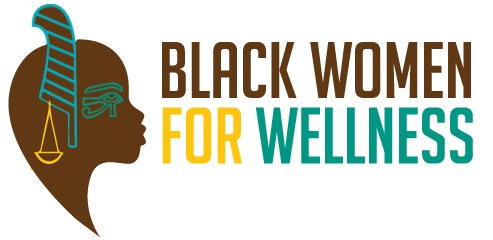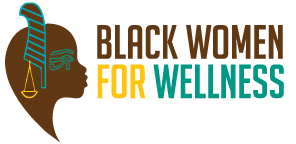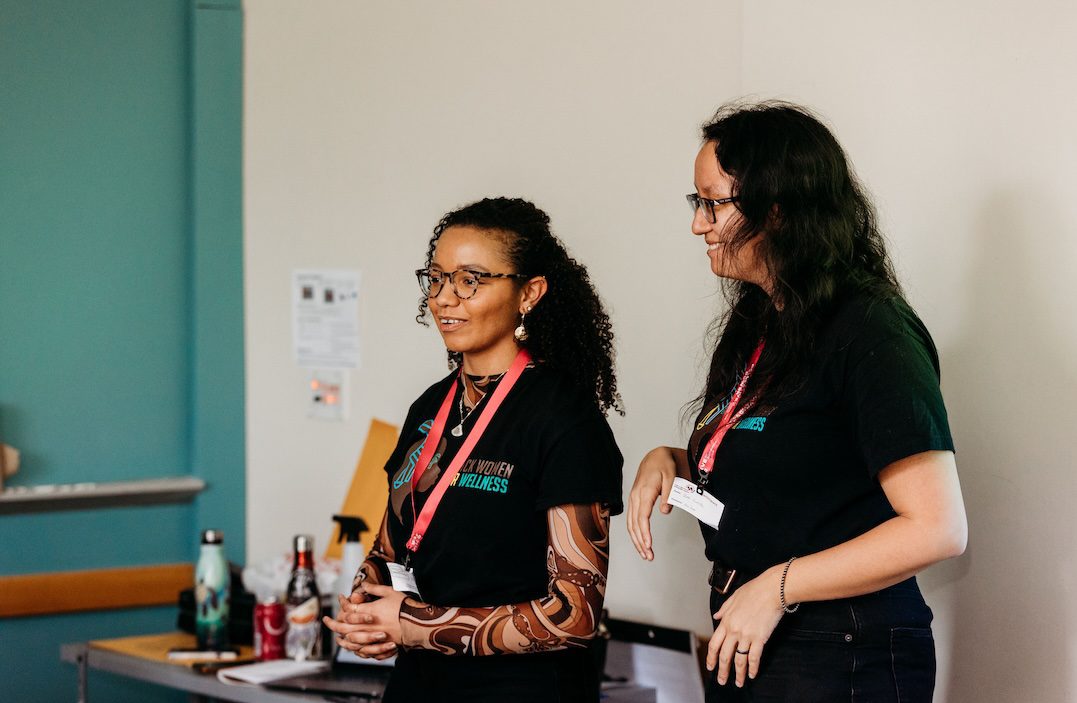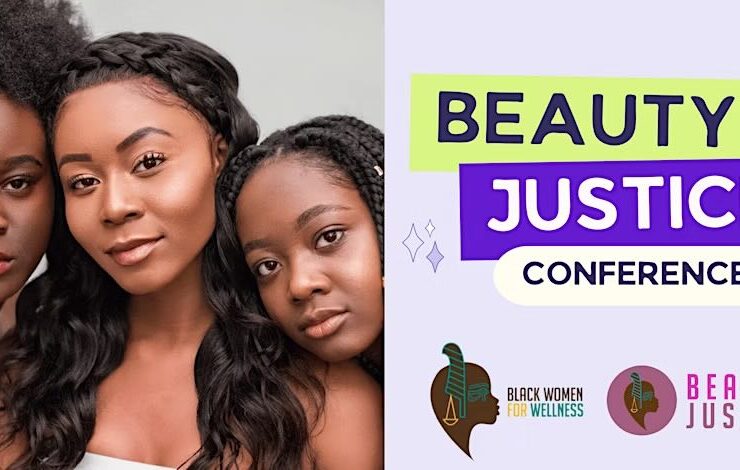The Life of Plastic: Black Women are Overexposed & Underprotected
Summary
The life cycle of plastic, from extraction through to refinement, use, and eventual disposal, has disproportionate health impacts on Black women across California. This report will focus on how the lifecycle of plastic pollution specifically harms Black women and girls in California.
Tianna Shaw-Wakeman, MSSE & Zoe Cunliffe, PhD
Black Women for Wellness
The State of Black Women in CA Submission
August 30 2024
Abstract
The life cycle of plastic, from extraction through to refinement, use, and eventual disposal, has disproportionate health impacts on Black women across California. In particular, since plastic contains endocrine disrupting chemicals and is a growing presence in all of our lives, the proliferation of plastic harms reproductive health and denies reproductive justice.
This present report will focus on how the lifecycle of plastic pollution specifically harms Black women and girls in California. With special consideration toward data Black Women for Wellness has collected from our South Los Angeles Community, this report aims to hone in on the importance of addressing the full life and harm of plastic and on actionable recommendations to curb this reality.
Keywords: plastic, lifecycle, reproductive justice, environmental justice
Black women, girls, femmes, and gender expansive people are over-exposed to and under-protected from toxic chemicals in both their built environments and in personal care products.
At Black Women for Wellness, we work to mitigate this harm through community-centered education, research, empowerment and advocacy; we do all of this through a reproductive justice, human rights lens.
This framework proclaims that all birthing people have a right to have a child, not to have a child, to raise a family in a safe and healthy environment, and to have full bodily autonomy and self-determination.
While it can be easy to see these rights narrowly, only relating to a woman’s reproductive system, it’s important to embody the holistic nature of the framework by addressing environmental racism and its particular impacts on Black people.
At BWW, we do this by working to end neighborhood oil drilling, bring about water equity, push for green social housing, and mitigate the lifecycle of plastics pollution.
This present report will focus on how the lifecycle of plastic pollution specifically harms Black women and girls in California. With special consideration toward data BWW has collected from our South Los Angeles Community, this report aims to hone in on the importance of addressing the full life and harm of plastic and on actionable recommendations to curb this reality.
When the topic of plastic pollution arises, conversation quickly narrows on plastic trash – how plastic is everywhere, how people need to better recycle, how unfortunate it is that people purchase so many plastics items.
However, much like focusing solely on reproduction misses the full scope of the reproductive justice framework, focusing solely on plastic trash misses the full scope of harm that the life of plastic has on Black bodies.
Since plastic is made from fossil fuels, the life of plastic begins at fossil fuel extraction, continues to transportation, moves to refinement and plastics production, grows at consumption, and does not end at disposal in the environment, an incinerator or through recycling. At the extraction phase, Black women and girls in CA are impacted by neighborhood oil drilling.
Across the Country, a study by UC Berkeley(1) found that redlined communities have almost 2x as many oil drills as non-redlined, mostly white communities; this was based on an accounting of 33 cities.
Across the state of CA, Black people and other communities of color make up 69%(2) of the 2.7 million Californians who live within a kilometer of oil drilling.
In Los Angeles, where BWW is based, the largest urban oil field in the United States, the Inglewood Oil Field (IOF) resides near predominantly Black neighborhoods, and though Black people make up less than 6% of California’s population, Black people in LA represent 12%(3) of those near the worst oil and gas operations.
In terms of health harm and the connection to reproductive justice, proximity to oil and gas drilling can increase risk of reproductive harm including an increase to preterm birth risks(4), and the risk of low birth weight babies(5).
The right to self-determination is also at risk because no one consented to bearing this harm, and Black communities have been withheld agency to determine land uses that would be community-serving.
Through 2 years of canvassing, BWW and its partner organization SCOPE knocked on over 26,000 doors and spoke with over 5,000 people surrounding the Inglewood Oil Field (IOF).
During the summer of 2022, BWW learned that 60% of those canvassed had personally experienced health harm related to the oil field or knew of someone who did; this harm included nosebleeds, asthma, headaches, cancer, and more.
The following year in 2023, when asked about harm residents experienced outside of health harm, residents noted concern for air, water, and soil quality – the basic components of living, of being well, and of being healthy – due to the presence of the IOF. Clearly, at only the first stage of the plastics life cycle, there is extreme harm.
Though not all of this extraction goes towards plastic production, oil and gas companies have shown that as demand for gasoline declines, they plan to expand into plastics(6) – as such, it is of great importance to understand these connections and to connect fossil fuel extraction to the lifecycle of plastic pollution.
Next in this deathcycle, as advocates call it, fossil fuels are transported. In Los Angeles, there are intricate networks of pipes under homes and properties to transport oil. These pipes are prone to leakages that can cause oil spills which harm nearby communities.
In 2021, 1,600 gallons of oil spilled(7) from a pipe near the Kenneth Hahn playground; this community is over 50% Black in a County that is less than 10% Black.
When it comes to turning fossil fuels into petrochemicals and the plastic that people recognize, much of this refinement and production in the US happens along the gulf coast.
In fact, Louisiana is home to an 85 mile stretch of land along the Mississippi River with over 200 fossil fuel and petrochemical facilities. This area is nicknamed “Cancer Alley”(8) due to the pollution causing(9) extremely high rates of cancer, reproductive harm, and respiratory harm in the surrounding communities.
In 2022, the UN(10) deemed “Cancer Alley” to be among the most polluted and hazardous areas on earth. As a sacrifice zone, the United States has clearly proclaimed that the Black lives lost and harmed(11) by such extreme toxic production are not worth helping.
Sadly, this is nothing new as much of the land these facilities reside on are former plantations; the terror from slavery and Jim Crow segregation has been replaced with the terror from plastics and petrochemical production that overwhelmingly harms Black communities in this Country – especially along the Gulf coast.
Plastic also has harmful effects further along in its lifecycle, where the actual consumption and use of plastic products disproportionately impacts the general and reproductive health of Black women in California.
All plastic products are made up of a high number of chemicals(12) – over 16,000 plastic chemicals, and so far at least 4,200 of these chemicals have been identified as harmful to human health.
To make matters more concerning, many of the chemicals in plastic are endocrine disrupting chemicals(13) (EDCs), which interfere with the body’s hormones and are capable of causing great reproductive harm.
This harmful impact of plastic particularly affects Black women in California, as Black women face an excess of plastic in their daily lives, on many fronts.
For example, the Taking Stock research study(14) that Black Women for Wellness has been involved with for many years has shown that Black women across California use far more hair products and are exposed to more EDCs within these products than White women.
This is confirmed by national bio-monitoring data(15) that shows higher rates(16) of beauty product related chemicals in Black women compared with White women.
This problem is intensified when one considers the fact that almost all of these personal care products come packaged in plastic(17) – and that the chemicals in the plastic leach out into the product, further worsening the health impacts of these products. In 2023, BWW conducted a phone banking canvas of South LA residents.
Over 1,250 predominately Black women were spoken with and 94% of those spoken to felt that they were strongly affected by plastic pollution, with one of their main concerns being the health impacts of plastic.
90% of canvas participants said they had some knowledge of how plastic packaging on food and beverages negatively impacts health, and have concerns about this; this is especially worrying since a more recent canvassing effort BWW conducted in spring 2024 found that 98% of Black households surveyed stored at least some of their drinking water in plastic.
This finding is important because a recent 2022 study(18) in the Journal of Hazardous Materials found that 150 chemicals can leach from a common PET plastic bottle into the beverage that an individual consumes.
Between exposure from personal care products, plastics chemicals, and from food and beverage packaging, Black women are greatly affected at the consumption stage of the lifecycle of plastic pollution.
In terms of moving to address and mitigate the harms caused by the lifecycle of plastic in California, BWW has been pursuing community health education, research, and advocacy.
Over the past year, BWW has held 3 town halls and distributed an educational pamphlet(19) offering simple advice to reduce exposure to harmful plastics in daily life. This advice includes reducing dependence on heavily packaged food and drink; not reheating food in plastic containers; and avoiding polyester clothes that are made from plastic.
However, it is incredibly difficult to avoid plastic altogether, and the problem of plastic pollution and its health impacts is a systems problem that requires a systems fix – corporations shouldn’t be allows to continually produced harm plastic and plastic chemicals, the US government needs to regulate industries and ban toxic chemicals in the name of public health and the environment, and Black women in particular need to be offered support and repair for the harms faced, especially those near current environmental hazards like the Inglewood Oil Field and Petrochemical facilities in “Cancer Alley.”
In California specifically, a hopeful change is underway in the form of legislation: SB 54(20) is a California state law that was passed in 2022 and whose regulations are currently being defined.
The law is a producer responsibility act that aims to shift accountability from consumers to producers, and to reduce single-use plastics across California 25% by 2032 and to set stricter recycling standards.
Starting in 2027, SB 54 will require all major plastic producers and retailers in California to pay $5B into a California Plastic Pollution Mitigation Fund, where a significant percentage of this money will be set aside to support communities most harmed by the lifecycle of plastic.
Since Black women in Los Angeles are one of the communities most harmed, BWW held a focus group with members in March 2024 to ask them how they feel these mitigation funds should be spent.
Several women shared that they felt more public education around plastic is needed, and that funding should be spent on that, which is consistent with feedback from our membership more widely.
In addition, the possibility of using SB 54 funds to support healthcare was mentioned, and specifically to support medical care surrounding infertility.
This is hugely significant, since emerging research shows a strong link between the chemicals found in plastics and infertility(21), and it has been shown that Black women are far more likely(22) than White women to experience infertility nationwide.
BWW is part of a coalition of community-based organizations known as EJCAP (Environmental Justice Communities Against Plastic), through which actively seek to influence the SB 54 rulemaking process to ensure that it benefits communities of color and Black women across California, whose lives as so impacted by the lifecycle of plastic.
Black women and girls can not be fully well and fully healthy until harm from the lifecycle of plastic is addressed. At BWW, we are actively working with, for, and as Black women to research, educate about, and mitigate this harm at many of its stages.
Citations:
- Gonzalez, D.J.X., Nardone, A., Nguyen, A.V. et al. Historic redlining and the siting of oil and gas wells in the United States. J Expo Sci Environ Epidemiol 33, 76–83 (2023). https://doi.org/10.1038/s41370-022-00434-9
- Ferrar, Kyle, et al. “Implications of a 3,200-Foot Setback in California.” FracTracker Alliance, Kyle Ferrar, MPH https://www.fractracker.org/a5ej20sjfwe/wp-content/uploads/2021/04/2021-FracTracker-logo-horizontal.png, 24 Aug. 2023, www.fractracker.org/2022/04/implications-of-a-3200-foot-setback-in-california/.
- Weisbrod, Katelyn. “History of Racism Leaves Black Californians Most at Risk from Oil and Gas Drilling, New Research Shows.” Inside Climate News, 6 Mar. 2024, insideclimatenews.org/news/05042023/california-race-oil-gas-drilling/.
- Gonzalez, David J., et al. “Oil and gas production and spontaneous preterm birth in the san joaquin valley, CA.” Environmental Epidemiology, vol. 4, no. 4, 5 June 2020, https://doi.org/10.1097/ee9.0000000000000099.
- Tran, Kathy V., et al. “Residential proximity to oil and gas development and birth outcomes in California: A retrospective cohort study of 2006–2015 births.” Environmental Health Perspectives, vol. 128, no. 6, June 2020, https://doi.org/10.1289/ehp5842.
- katie_brigham. “How the Fossil Fuel Industry Is Pushing Plastics on the World.” CNBC, CNBC, 1 Feb. 2022, www.cnbc.com/2022/01/29/how-the-fossil-fuel-industry-is-pushing-plastics-on-the-world-.html.
- Doherty, Liz, and Sommer Yesenofski. “Oil Spill at Inglewood Oil Field Sends Over 1,600 Gallons Flowing Near Communities.” Home, www.sierraclub.org/press-releases/2021/04/oil-spill-inglewood-oil-field-sends-over-1600-gallons-flowing-near. Accessed 30 Aug. 2024.
- “Battling Petrochemical Expansion in Louisiana.” Rise St. James, risestjames.org/. Accessed 30 Aug. 2024.
- Terrell, Kimberly A, and Gianna St Julien. “Air pollution is linked to higher cancer rates among black or impoverished communities in Louisiana.” Environmental Research Letters, vol. 17, no. 1, 1 Jan. 2022, p. 014033, https://doi.org/10.1088/1748-9326/ac4360.
- “A/HRC/49/53: The Right to a Clean, Healthy and Sustainable Environment: Non-Toxic Environment – Report of the Special Rapporteur on the Issue of Human Rights Obligations Relating to the Enjoyment of a Safe, Clean, Healthy and Sustainable Environment | OHCHR.” United Nations Human Rights Office of the High Commissioner, www.ohchr.org/en/documents/thematic-reports/ahrc4953-right-clean-healthy-and-sustainable-environment-non-toxic. Accessed 31 Aug. 2024.
- Juhasz, Antonia. “‘we’re Dying Here.’” Human Rights Watch, 30 May 2024, www.hrw.org/report/2024/01/25/were-dying-here/fight-life-louisiana-fossil-fuel-sacrifice-zone.
- Martin Wagner, Laura Monclús, Hans Peter H. Arp, Ksenia J. Groh, Mari E. Løseth, Jane Muncke, Zhanyun Wang, Raoul Wolf, Lisa Zimmermann (2024). State of the science on plastic chemicals – Identifying and addressing chemicals and polymers of concern, http://dx.doi.org/10.5281/zenodo.10701706.
- Ullah, Sana, et al. “A review of the endocrine disrupting effects of micro and nano plastic and their associated chemicals in mammals.” Frontiers in Endocrinology, vol. 13, 16 Jan. 2023, https://doi.org/10.3389/fendo.2022.1084236.
- Dodson, Robin E., et al. “Personal care product use among diverse women in California: Taking stock study.” Journal of Exposure Science & Environmental Epidemiology, vol. 31, no. 3, May 2021, pp. 487–502, https://doi.org/10.1038/s41370-021-00327-3.
- Huang, Tianyi, et al. “Gender and racial/ethnic differences in the associations of urinary phthalate metabolites with markers of diabetes risk: National Health and Nutrition Examination Survey 2001–2008.” Environmental Health 13.1 (2014): 1-10. https://doi.org/10.1186/1476-069x-13-6
- Calafat, Antonia M., et al. “Urinary concentrations of four parabens in the US population: NHANES 2005–2006.” Environmental health perspectives 118.5 (2010): 679-685. https://doi.org/10.1289/ehp.0901560
- Editor, Plastic Pollution Coalition. “The Ugly Side of Beauty: The Cosmetics Industry’s Plastic Packaging Problem.” Plastic Pollution Coalition, 13 July 2022, www.plasticpollutioncoalition.org/blog/2022/1/25/the-ugly-side-of-beauty-the-cosmetics-industrys-plastic-packaging-problem.
- Gerassimidou, Spyridoula, et al. “Unpacking the complexity of the pet drink bottles value chain: A chemicals perspective.” Journal of Hazardous Materials, vol. 430, May 2022, p. 128410, https://doi.org/10.1016/j.jhazmat.2022.128410.
- Black Women for Wellness “The Life of Plastic: A Reproductive Justice Issue.” chrome-extension://efaidnbmnnnibpcajpcglclefindmkaj/https://bwwla.org/wp-content/uploads/2023/10/The-Lifecycle-of-Plastic-Pollution-2.pdf
- California, State of. “SB 54: Plastic Pollution Prevention and Packaging Producer Responsibility Act.” CalRecycle Home Page, calrecycle.ca.gov/packaging/packaging-epr/. Accessed 30 Aug. 2024.
- Hong, Yifan, et al. “Adverse effects of microplastics and nanoplastics on the reproductive system: A comprehensive review of fertility and potential harmful interactions.” Science of The Total Environment, vol. 903, Dec. 2023, p. 166258, https://doi.org/10.1016/j.scitotenv.2023.166258.
- “Black Women Are More Likely to Experience Infertility than White Women. They’re Less Likely to Get Help, Too.” The Guardian, Guardian News and Media, 10 Dec. 2023, www.theguardian.com/us-news/2023/dec/10/black-women-infertility-causes-treatment-inequity-healthcare.




